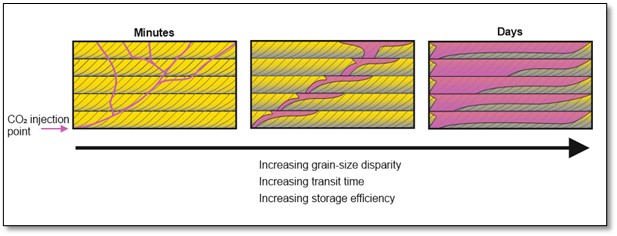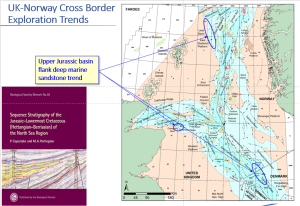Article 6: Caprock Leakage and Seal Integrity in CO2 Storage – Part 2
Part 1 of this article explored the importance of caprock integrity and the challenges of evaluating it for CO2 storage projects. We also discussed the role of capillary forces and capillary threshold pressure in CO2 flow and seal integrity. In this part, we delve into the role of geomechanics and how injected fluids influence rock behaviour.
Geomechanics and Safe CO2 Storage
Re-pressurising depleted hydrocarbon sites and injecting CO2 into formations that were initially under hydrostatic pressure (aquifer storage sites) necessitate detailed geomechanical evaluations. These evaluations are essential for determining safe limits for injection operations, such as maximum reservoir pressure, bottom-hole pressure, and injection rates. The level of detail required for geomechanical evaluations in CO2 storage projects is typically more extensive than what is common for oil and gas fields, and data can be limited or unavailable in aquifer storage locations.
Safe geological storage also involves addressing the risk of induced seismicity; small earthquakes triggered by human activities like fluid injection. Assessing a storage site’s suitability requires characterising these risks which are related to structural features such as faults and their hydraulic connection with the underlying crystalline basement (the deepest and strongest layer of the Earth’s crust). This process involves detailed mapping of the different rock horizons and an evaluation of stress regimes within the subsurface. Studies may be necessary to assess the likelihood of triggered or induced seismicity, possible reactivation of faults and fractures, and the thermo-elastic responses of the rock to the pressure increase or temperature changes that occur during injection.
The Role of Threshold Pressure

A CO2 storage site with a high-capacity seal will have very high threshold pressure values. In contrast, the storage formation (reservoir) itself will have lower threshold pressure values. The high threshold pressure of the seal holds back the CO2 causing it to backfill the storage site. In the Sleipner project, the multi-layered CO2 plume is subject to strong gravity segregation, with intraformational shales (shale layers within a formation) having higher threshold pressures than the Utsira sand carrier beds. Each CO2 layer backfills until it reaches the threshold pressure needed to overcome the pressure difference between the seal and the carrier. The CO2 then breaches the seal, moves up to the next sand carrier bed and starts the backfilling process anew. This process can be seen in Figure 1 above.
Geomechanics and Geochemistry
It is also important to understand the chemical reactions that are going on within the CO2 plume as it migrates after injection. They can start as soon as CO2 is injected and occur for hundreds of years after (Jun et al, 2012). Examples of these chemical reactions include dissolution of CO2 in brine (forming weak carbonic acid (Maalim et al, 2021), dissolution of the formation rock, and precipitation of carbonate minerals, amongst others. These reactions effect the porosity, permeability and wettability of the storage unit, altering the migration path the injected CO2 can take. The wellbore and caprocks can also both be subject to chemical reactions which could result in serious leakage risks (Jun et al, 2012). Therefore, understanding the geochemical reactions that take place is imperative for safe CO2 storage as it helps to understand the migration path of the CO2, the mechanism of storage within the formation and to ensure the CO2 will not leak.
Conclusion
Geomechanics is crucial for understanding seal integrity and caprock leakage. A comprehensive understanding of capillary forces, geomechanics, and geochemical processes is required for robust modelling and risk assessment to ensure safe and long-term CO2 storage.
References
- Bebb, F. (2021, February). Understanding flow dynamics of CO2 plumes in the subsurface. Subsurface Insights, pp. 21-25.
- Bebb, F. L., Evans, K. C. S., Mukherjee, J., Saeed, B., & Geovani, C. (2021, November). Understanding the flow dynamics of CO2 plumes in the subsurface [Paper presentation]. Abu Dhabi International Petroleum Exhibition & Conference, Abu Dhabi, UAE. https://doi.org/10.2118/207539-MS
- Jun, Y.S., Giammar, D.E., and Werth, C.J. 2012. Impacts of Geochemical Reactions on Geologic Carbon Sequestration. Environ. Sci. Technol. 2013, 47, 1, 3–8 https://doi.org/10.1021/es3027133
- Maalim, A.A., Mahmud, H.B., and Seyyedi, M. 2021. Assessing roles of geochemical reactions on CO2 plume, injectivity and residual trapping. Energy Geoscience 2 (2021) 327-336
Benjamin Adillah, Senior Reservoir Engineer



